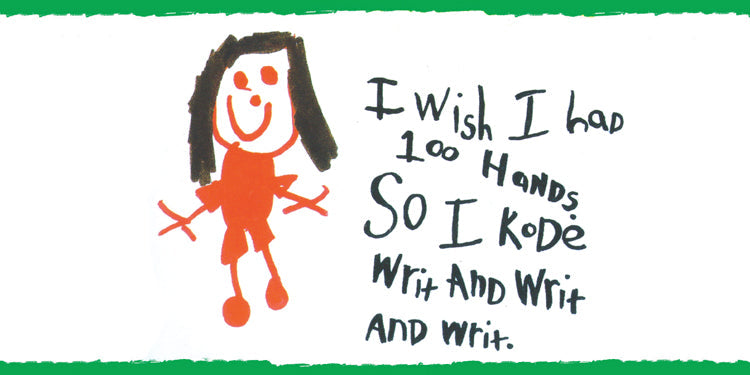
Kid Writing in the 21st Century authors Richard Gentry, Eileen Feldgus, and Isabell Cardonick have been featured in a guest post over on the Psychology Today blog. The post details some of the research-based, classroom-tested practices and strategies that have been shown to help kids learn to write. Here's an excerpt from the post:
1. Use invented spelling.
We found invented spelling to be joyful, motivational for our students, and wonderful in terms of providing opportunities for scaffolding and systematically teaching almost all important aspects of the kindergarten literacy curriculum including phonics, phonemic awareness, knowledge of the alphabet, writing conventions, and vocabulary development. But perhaps the most amazing discovery throughout our journey was that kids had remarkable capacities to make meaning if we supported them in the process and allowed their creative juices to flow.
2. Abandon teaching letter of the week.
Teaching one letter per week was standard practice in kindergarten when we began teaching. We tried our best to jazz up our teaching of the alphabetic principle because we knew it was essential to breaking the code and reading.
3. Use a developmental writing scale to monitor progress.
Even before we published the first book on Kid Writing, we were collaborating with Richard Gentry on how to use a developmental spelling/writing assessment along with a developmental rubric to show how young children’s progression through five phases of developmental spelling revealed—among other things—the individual child’sunderstanding of phonics and his or her invented spellings as evidence of what the child knew or did not know.
4. Let go of worksheets!
We found that teaching and learning in our classrooms improved when we abandoned worksheets.
5. Teach children to stretch though a word with a moving target.
Our stretching through technique helped kids move from
l
for
lady
in Phase 2 to
lad
in Phase 3 to
ladee
in syllable chunks in Phase 4, on the way to conventional
lady
. The stretching through technique met kids where they were and supported them in moving to higher levels of spelling sophistication from phase to phase.
The book Kid Writing in the 21st Century explains in great detail how to most effectively implement these practices and strategies. It includes reproducibles and a strategy guide to make adopting this process in your classroom quite simple.
For more information on the book, click the image below to view or download a brochure.




















































